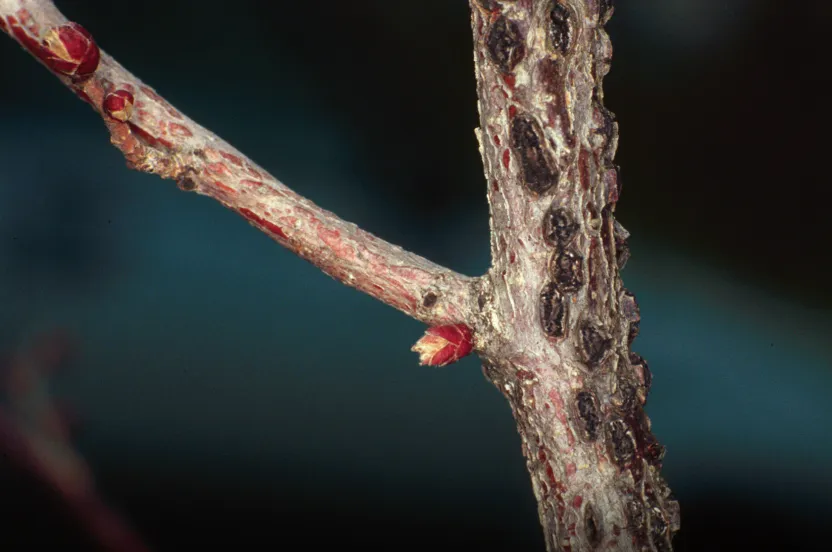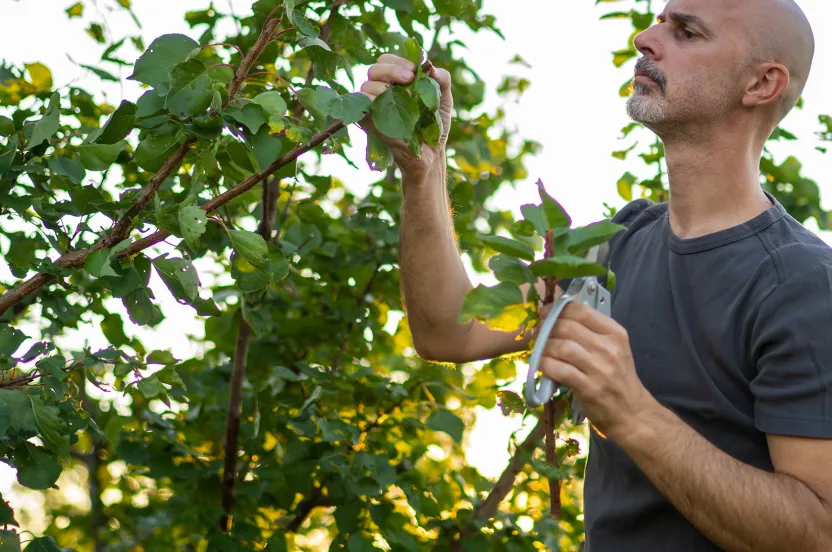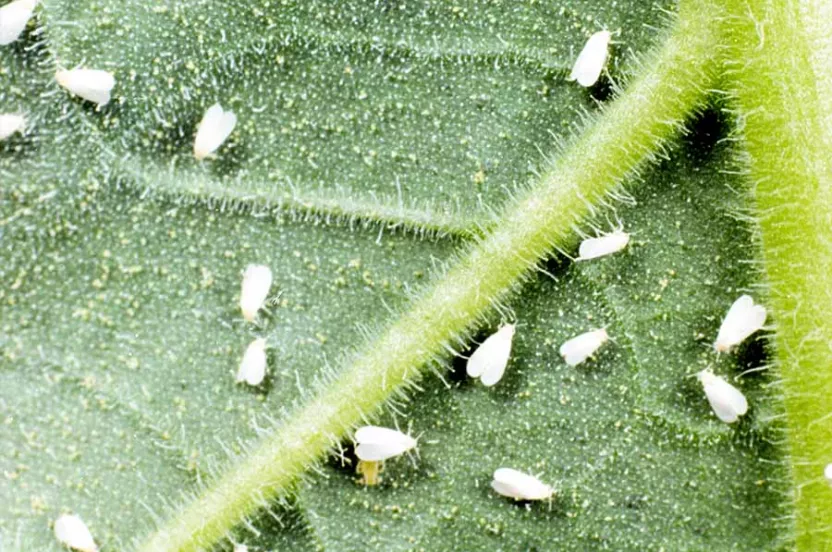The Arbor Day Foundation is pledging 10 million trees to areas impacted by hurricanes Helene, Milton Help us replant
Maintenance & Health
Emerald Ash Borer
The bright metallic-green beetle may be smaller than a dime, but it is capable of taking down ash trees thousands of times its size.
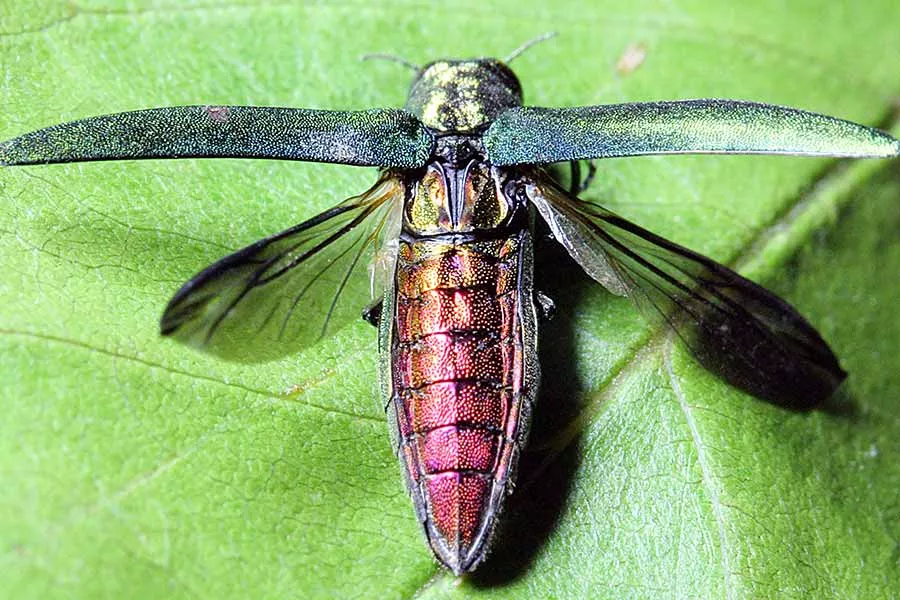
What is the Emerald Ash Borer?
Originally from Asia, the emerald ash borer (EAB) was first discovered in the Detroit area in 2002. It is believed to have entered the country on wooden packing materials from China. Adults are typically ½ inch long and ⅛ inch wide. Eggs are extremely small—approximately 1/25 inch—and are reddish-brown in color. Larvae are white, flat-headed borers with distinct segmentation.
Adults usually emerge in mid- to late-May from infestations to the trees during the previous year (earlier if the weather is warm), with females laying their eggs shortly after. The larvae bore into the ash tree and feed under the bark, leaving tracks visible underneath. The feeding disrupts the tree’s ability to transport water and nutrients, resulting in dieback and bark splitting.
About the Emerald Ash Borer
Threat
What is the threat?
Ash trees are one of the most valuable and abundant North American woodland trees: estimates of total number of ash trees in the United States alone range between seven and nine billion. The emerald ash borer has destroyed 40 million ash trees in Michigan alone and tens of millions throughout other states and Canada. Small trees can die as soon as one to two years after infestation, while larger infested trees can survive for three to four years. Heavy infestations of larval borers speed up the devastation of formerly healthy trees.
Where is it found?
The emerald ash borer primarily lives in the midwestern and eastern United States and parts of Canada, but is spreading fast. For a current list of locations where EAB has been confirmed, check out the map on emeraldashborer.info.
What can you do about it?
Know the symptoms of EAB: thinning or dying of ash tree crowns, suckers at the base of the tree, splitting bark, tunneling under the bark, D-shaped exit holes and woodpecker activity. The United States Department of Agriculture (USDA) recommends the following to help manage this pest:
- Call the USDA Emerald Ash Borer Hotline at 1-866-322-4512 or your local USDA Animal and Plant Health Inspection Service (APHIS) office if you think you’ve found an EAB infestation
- Record the area where you found the insect and take photos of the insect along with any damage
- Don’t move firewood from your property or carry it across state lines
- Buy firewood from local sources and burn it where you buy it
- Buy kiln-dried firewood
- Before spring, burn your remaining firewood supply to eliminate the chance of EAB spreading to live trees
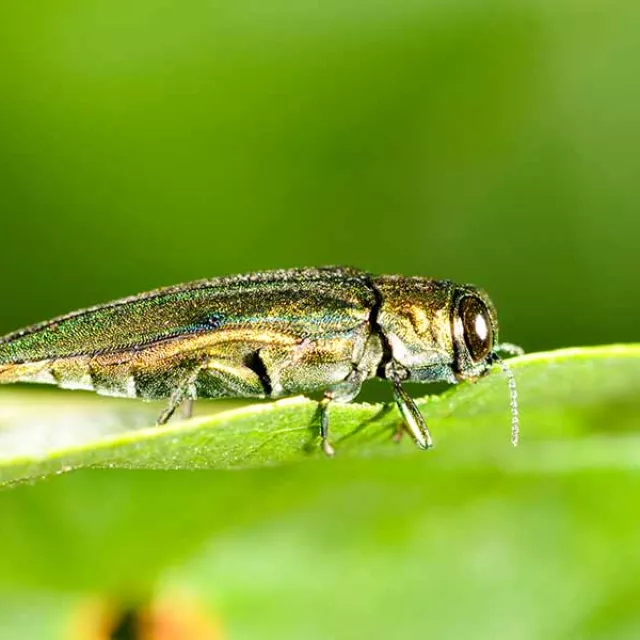
Everything You Need to Know About the Emerald Ash Borer
For more information about possible preventative measures and potential treatments, please contact your local extension service, certified arborist or professional nursery. For more information on the Emerald Ash Borer, visit the official Emerald Ash Borer website.
Information provided April 2015, courtesy of the Bayer Advanced Healthy Trees for Life initiative. Bayer®, the Bayer Cross® and Bayer Advanced™ are trademarks of Bayer. Photos by David Cappaert, Michigan State University, Bugwood.org and Purdue University Department of Entomology photo/John Obermeyer.

